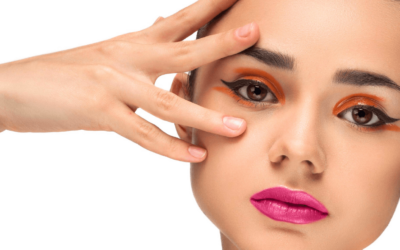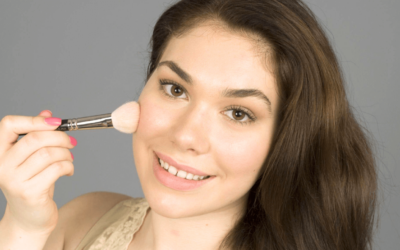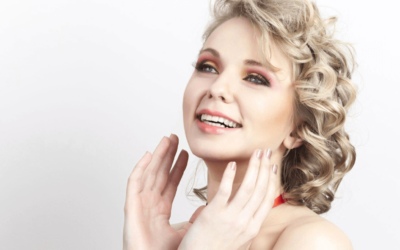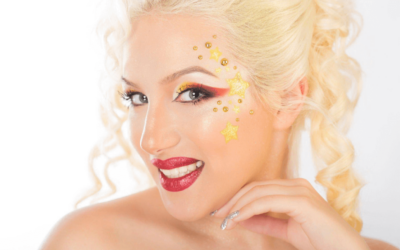Makeup has become an essential part of many people’s daily beauty routines. From enhancing features to boosting confidence, makeup offers transformative power. However, you may wonder, “How long can you wear makeup before it becomes unsafe or ineffective?”
In this comprehensive guide, we will explore the longevity and safety of makeup, providing essential information to ensure your beauty products remain fresh, effective, and safe for use.
Whether you’re a makeup enthusiast or a beginner, understanding makeup expiration and shelf life is crucial for maintaining healthy skin and achieving flawless looks.
Let’s dive into the world of makeup longevity and discover how to keep your beauty routine in top shape!
Understanding Makeup Shelf Life
Every makeup product has a limited shelf life due to its formulation and exposure to air and bacteria. Understanding the shelf life of different makeup products is vital to avoid using expired products that can cause skin irritation or other adverse reactions.
Here’s a general guideline:
Mascara: Mascara has the shortest shelf life and should be replaced every three to six months to prevent eye infections and clumping.
Foundation: Liquid and cream foundations typically last six to twelve months, while powder foundations can last up to two years.
Eyeshadow and Blush: Powder eyeshadows and blushes can last up to two years, but cream versions should be replaced after six to twelve months.
Eyeliners and Lip Liners: Pencil eyeliners and lip liners can last up to two years, while liquid eyeliners should be replaced every three to six months.
Lipsticks and Lip Gloss: Lipsticks and lip glosses have a shelf life of one to two years, but if they start to smell off or change in texture, it’s time to replace them.
Concealers and Highlighters: Similar to foundation, liquid and cream concealers and highlighters last around six to twelve months.
Signs of Expired Makeup
Using expired makeup can lead to skin irritation, breakouts, and infections. To avoid potential issues, be vigilant for these signs of expired makeup:
Change in Smell: If your makeup product develops an unpleasant or rancid smell, it’s time to toss it.
Texture Changes: Expired makeup may become clumpy, separated, or dried out, affecting its application and performance.
Color Alteration: Makeup products that change in color or consistency are likely past their prime.
Irritation or Allergic Reactions: If your skin becomes red, itchy, or irritated after using a product, discontinue its use immediately.
Makeup Storage Tips for Prolonging Longevity
Properly storing your makeup can extend its shelf life and keep it in optimal condition. Follow these storage tips:
Keep It Cool and Dry: Store your makeup in a cool, dry place away from direct sunlight and humidity. Avoid keeping makeup in the bathroom where temperature fluctuations can occur.
Tighten Lids Securely: Ensure that all product lids are tightly closed to prevent air from entering and bacteria from contaminating the product.
Wash Your Hands: Always wash your hands before using makeup to reduce the risk of transferring bacteria to your products.
Decoding Makeup Labels
Understanding makeup product labels can provide valuable information about its expiration and shelf life.
Look for the following:
Period After Opening (PAO) Symbol: This symbol resembles an open jar and includes a number and the letter “M” (months). It indicates how many months the product is safe to use after opening.
Batch Number: The batch number helps identify the manufacturing date, which is useful for tracking the product’s age.
Makeup Safety and Hygiene Practices
In addition to monitoring expiration dates, following proper makeup hygiene practices is essential for your skin’s health:
Clean Brushes and Sponges: Regularly clean your makeup brushes and sponges to prevent the buildup of bacteria and product residue.
Wash Your Face Before Applying Makeup: Starting with a clean face ensures that your makeup adheres better and reduces the risk of clogged pores.
Avoid Sharing Makeup: Sharing makeup products can transfer bacteria and increase the risk of infections. Stick to using your own products.
When to Replace Makeup Brushes and Sponges
Makeup brushes and sponges are essential tools for flawless application. However, they also have a lifespan and should be replaced when:
Brush Bristles Are Frayed: If the bristles of your makeup brush start to fray or shed excessively, it’s time for a replacement.
Sponges Lose Their Shape: Makeup sponges lose their efficacy when they become misshapen or develop tears.
Conclusion
Understanding the longevity and safety of makeup is crucial for maintaining healthy skin and achieving stunning looks.
By being aware of makeup expiration dates, signs of product deterioration, and proper storage and hygiene practices, you can ensure that your makeup routine remains effective and enjoyable.
Regularly inspect your makeup products, and when in doubt, opt for a fresh replacement. A well-maintained makeup collection not only helps you achieve flawless results but also contributes to healthier and happier skin.
So, go ahead, declutter your makeup stash, and embrace the beauty of fresh, safe, and on-point makeup products for a more confident and beautiful you!
















